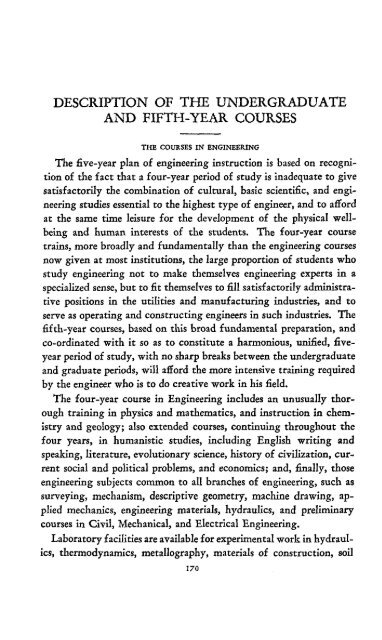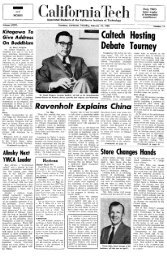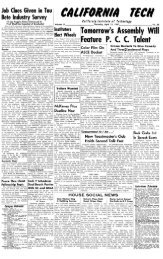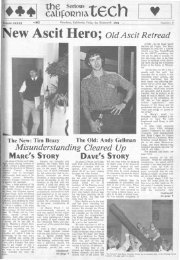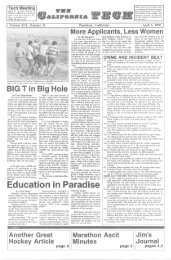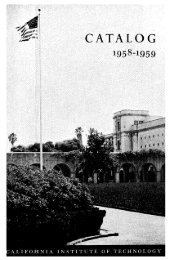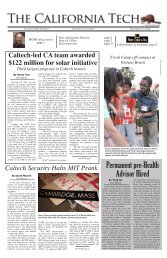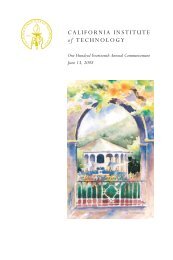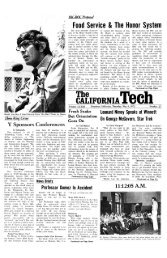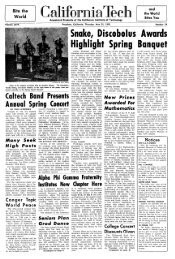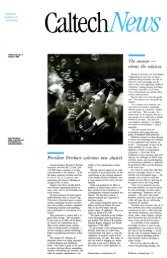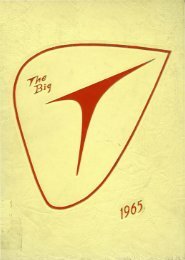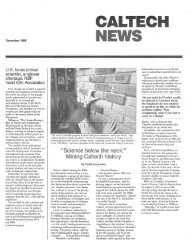PDF (1941) - CaltechCampusPubs
PDF (1941) - CaltechCampusPubs
PDF (1941) - CaltechCampusPubs
You also want an ePaper? Increase the reach of your titles
YUMPU automatically turns print PDFs into web optimized ePapers that Google loves.
DESCRIPTION OF THE UNDERGRADUATE<br />
AND FIFTH-YEAR COURSES<br />
THE COURSES IN ENGINEERING<br />
The five-year plan of engineering instruction is based on recognition<br />
of the fact that a four-year period of study is inadequate to give<br />
satisfactorily the combination of cultural, basic scientific, and engineering<br />
studies essential to the highest type of engineer, and to afford<br />
at the same time leisure for the development of the physical wellbeing<br />
and human interests of the students. The four-year course<br />
trains, more broadly and fundamentally than the engineering courses<br />
now given at most institutions, the large proportion of students who<br />
study engineering not to make themselves engineering experts in a<br />
specialized sense, but to fit themselves to fill satisfactorily adIninistrative<br />
positions in the utilities and manufacturing industries, and to<br />
serve as operating and constructing engineers in such industries. The<br />
fifth-year courses, based on this broad fundamental preparation, and<br />
co-ordinated with it so as to constitute a harmonious, unified, fiveyear<br />
period of study, with no sharp breaks between the undergraduate<br />
and graduate periods, will afford the more intensive training required<br />
by the engineer who is to do creative work in his field.<br />
The four-year course in Engineering includes an unusually thorough<br />
training in physics and mathematics, and instruction in chemistry<br />
and geology; also extended courses, continuing throughout the<br />
four years, in humanistic studies, including English writing and<br />
speaking, literature, evolutionary science, history of civilization, current<br />
social and political problems, and econoInics; and, finally, those<br />
engineering subjects common to all branches of engineering, such as<br />
surveying, mechanism, descriptive geometry, machine drawing, applied<br />
mechanics, engineering materials, hydraulics, and preliIninary<br />
courses in Civil, Mechanical, and Electrical Engineering.<br />
Laboratory facilities are available for experimental work in hydraulics,<br />
thermodynaInics, metallography, materials of construction, soil<br />
170


